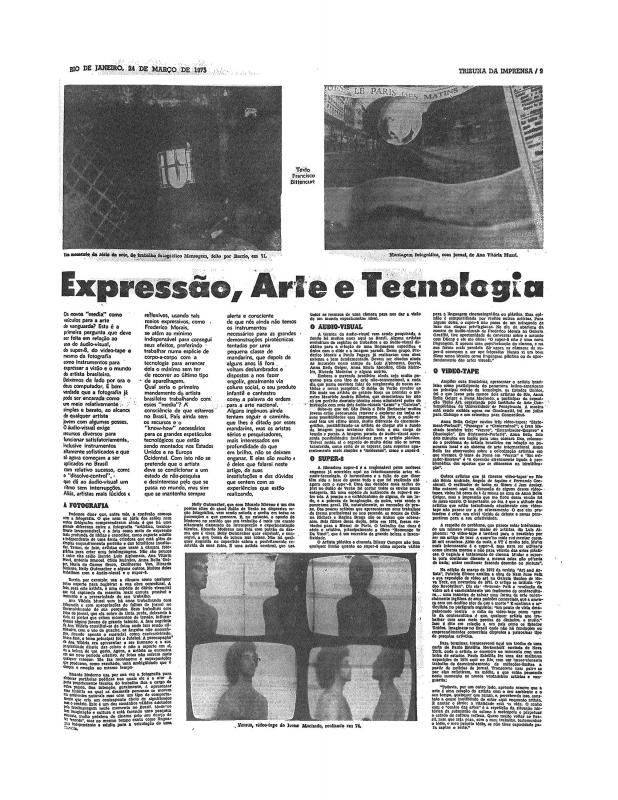Do corpo à Terra was an exhibition of urban work that was organized in 1970 by Frederico Morais in Belo Horizonte. Participants in the event included the following artists: Cildo Meireles, Artur Barrio, Luiz Alphonsus, Lotus Lobo, Umberto Costa Barros, Dilton Araújo, Luciano Gusmão, Teresa Simões, Eduardo Ângelo, Dileni Campos, Décio Noviello, José Ronaldo Lima, Jorge Helt, and Lee Jaffe, as well as Morais, who also exhibited his own work.
Francisco Bittencourt was a particularly thoughtful and active critic in the Rio de Janeiro art scene in the late 1960s and early 1970s. This interview can be viewed as a secondary source. It is of interest because it reactivated the critical debate that raged during that decisive time about political life in Brazil after the suspension of civil guarantees as decreed by Ato Institucional No. 5. The conversation encompasses a number of subjects, from artistic tradition to the anti-art produced by the generation known as tranca ruas [Blocking Streets]. Bittencourt, of course, had already explored the relationship between art and technology [see “Expressão, arte e tecnología,” ICAA digital archive, doc. no. 1110492]. He and the critic and then-artist Paulo Herkenhoff had previously discussed this type of radical challenge; see: “A arte experimental quer ‘questionar a sensibilidade vigente’” (doc. no. 1110612).
Frederico [de] Morais (b. 1936) is one of the key figures in Brazilian art criticism. He started his career as a movie reviewer in Belo Horizonte, where he wrote columns on culture for several newspapers. He always spoke out in defense of unconventional forms of art and the experimental works of the avant-garde. In 1967, he moved to Rio de Janeiro where he was a newspaper art critic for many years for Diário de Notícias and for O Globo. He was one of the most active of the “committed” critics of the 1960s and 1970s, having supported a number of avant-garde movements of the period and working as a curator on several avant-garde exhibitions.


